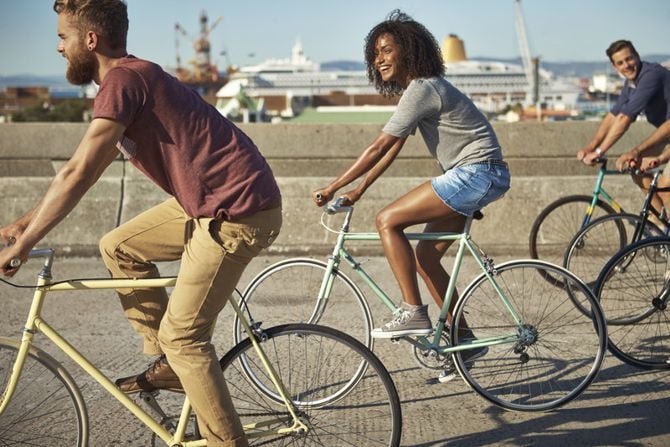An Owayo survey shows that US residents’ relationship with cycling seems to be mainly recreational

A recent survey conducted by an international sporting store, seems to indicate that cycling in US is more commonly used for recreational purposes than any other in the daily lives of the US residents. The purpose of this study was to determine their relationship or more so their interest in cycling overall. It was also aimed to shed light on the possible lack of use of more environmental friendly and health benefiting means of transport such as cycling.
15% of survey participants gathered throughout most of the US regions, of which nearly an equal amount was of men and women, with household incomes mainly ranging from $10,000 to $99,999 per year, only around 25% used their bikes as a means of transport.
Average Cycling Distance Per Year
Whilst US residents prefer cycling as a recreational activity, they do not appear to engage in such as frequently as expected throughout the year. Only around 20% cycle between 10 to 100 miles per year, with further 10% doing a bit over 100 miles. On the other hand, the remaining 70% often do not even cycle at all throughout the year, with some only doing up to 10 miles.
Impact of Age On Cycling Patterns
There appears to be a pattern when it comes to the age of those who might prefer cycling for recreational purpose and those who might use it for transportation. Residents under 44 years of age are far more inclined to cycle for transportation in comparison to the older generations. Despite such findings though, both age groups overall still pursue cycling as more of a recreational activity.
How Are Cyclists Perceived by Other Road Users
We all have our views on cyclists, especially those that ride directly on the roads. Could these views or perceptions be the reasons people are less inclined to use cycling as a means of transport or even at all?
The survey shows that around 55% of the participants do not consider cyclists to be annoying or a nuisance on the road as long as they abide by traffic regulations. This appears fair enough but there are still those other 45% who might think otherwise. Such perception might be one of the reasons people are put off pursuing cycling, especially for transportation purposes.
Some of the common responses provided by the respondents in support of the above are:
- Cyclists are annoying sometimes, if proper precautions are not undertaken;
- Not if they stay in the bike lane;
- More worrisome than annoying, for safety reasons;
- They are ok as long as they do not cross into the driving lane.
Views, Attitudes, Perceptions and Road Structures
Many countries throughout the world, mainly Europe, are restructuring and becoming more cycle friendly. In addition to educating their residents on the vast benefits of regular cycling, especially for transportation purpose, they have also restructured their cities to accommodate and ensure safe cycling throughout. Naturally, this alters people’s perception on cycling and encourages greater use. Considering that US residents in this study appear to worry the most about the safety of the cyclists and not interfering with the traffic in general, implementing what other countries have done might be the way to go for United States as well.
References:
https://www.treehugger.com/reasons-to-start-using-a-bicycle-for-transportation-4864170
https://www.sharetheroad.ca/why-do-people-choose-not-to-cycle--s16209#
https://www.nationalgeographic.com/environment/article/is-the-us-becoming-more-bike-friendly
https://www.businessinsider.com/what-americans-dont-get-about-cycling-2013-4
https://www.betterhealth.vic.gov.au/health/healthyliving/cycling-health-benefits
https://environmental-conscience.com/bicycling-pros-cons/
https://www.apzomedia.com/us-cities-becoming-dangerous-cyclists/